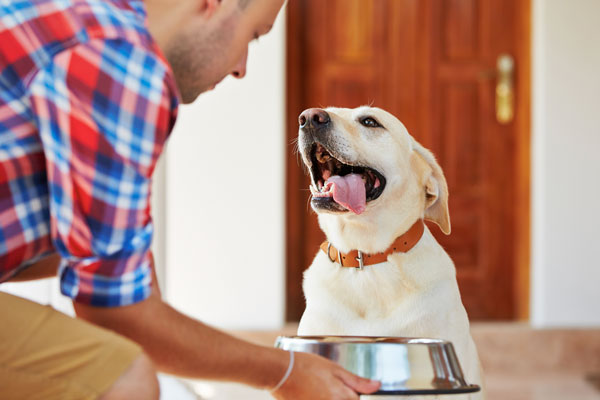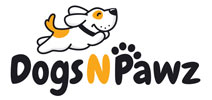What Information Should Pet Owners Find on Dog Food Packaging?
Dog food packaging, like human food packaging, can be confusing, unclear, and fraught with unfamiliar terms and designations.
It sometimes feels like you need to be a food scientist to understand what’s going on, even though pet food labelling is regulated.
There are eight pieces of information that are required, by law, on pet food packaging in the United States:
At minimum, make sure you can find that information on dog food labels before purchasing your selection.
Although there are laws about pet food content and labelling, the U.S. Food & Drug Administration (FDA) does not provide pre-market approval to dog food. However, the federal organization makes sure the ingredients in pet food are safe.
Let’s break down the legal requirements:
Brand and Product Name
This is straightforward. You’ll see a brand, usually with a logo, like Purina, followed by the product name: Purina ProPlan.
This is often followed by more information like “complete and balanced” or “all life stages formula” or “grain-free”.
Species the Food is For
This is also clear: usually there is an illustration or photograph of the animal and somewhere on the front of the box it will say “dog food” or “for cats and dogs” or a variation of this language. The picture is meant to catch your eye on the shelf or website and provide instant recognition.
Specificity is Critical
A label can say “Turkey dog food” or “Sardine treats for cats”
Quantity Statement
This is the net weight or net volume of the entire package of food. This label has to be placed in the lower third of the front of the package, so look for it there. The way weight is communicated (metric or imperial) will depend on your country of residence and the requirements in that country.
Guaranteed Analysis
“This lists the percentage of each of the nutrients in the food,” the Association of American Feed Control Officials (AAFCO) states.
It looks much like the nutrition facts and information panel on human food.
The AAFCO provides minimum requirements for crude protein and fat, and sets the maximum percent of crude fiber and moisture that is always required in pet food.
“AAFCO establishes the nutritional standards for complete and balanced pet foods, and it is the pet food company’s responsibility to formulate their products according to the appropriate AAFCO standard,” the AFFCO website says.
Food has to be tested in a lab to be guaranteed.
Foods products claiming to be low calorie, or other quantitative terms like high protein, must also go through a guaranteed analysis that show they are as claimed and substantially lower or higher than the AAFCO’s recommended minimums or maximums.
Dog food brands often show the amount of protein and fat provided in the food in a clearly marked table on the package. Dog treats do not have to meet specific ingredient amounts, so they are not labelled with Guaranteed Analysis.
Ingredient Statement
“Ingredients must be listed in order of predominance by weight, on an “as formulated” basis,” according to the AAFCO. “The ingredient that makes up the highest percentage of the total weight as it goes into the product is listed first. Each ingredient must be listed by its appropriate name.”
This is similar to how ingredient labels for human food work.
Ingredients have to be called what they are — the common or usual name, or a name that is deemed correct by the AAFCO.
For pet owners concerned about purchasing food with sufficient protein and high quality ingredients, look for food that has an animal protein as the first ingredient. This typically means the food is higher quality, or at least that it isn’t using a grain filler as the primary ingredient. Veggies and fruits usually come next, followed by other additions like grains or flax. Other ingredients listed are often supplements, vitamins, minerals, and preservatives.
The ingredient list is a good place to look to make sure the food doesn’t contain anything you know your pup is allergic to.
Raw dog foods should include few ingredients. If you’re buying straight protein, it should only contain muscle, bone, organs, blood and fat from the animal the protein is based on. Some raw foods include a percentage of veggies and fruits.
“The ingredients used in pet food must be appropriate for the pet,” the AAFCO notes. “Anything in pet food has to be “generally recognized as safe” by the FDA. Not just any ingredient can be used, especially “new” ingredients that might be used [as] a dietary supplement [sic] for humans.”
Nutritional Adequacy Statement
Dog food brands may indicate a product is “complete and balanced”. If that phrase is used, it has a very specific meaning, according to the FDA.
“To have “complete and balanced” in the nutritional adequacy statement, a dog or cat food must either: Meet one of the Dog or Cat Food Nutrient Profiles established by the Association of American Feed Control Officials; or pass a feeding trial using AAFCO procedures. For a product to meet one of the AAFCO nutrient profiles, it must contain every nutrient list in the profile at the recommended level.”
The AAFCO nutrient profiles can be found on its website.
Food brands must indicate a product is for a puppy, adult or senior dogs. Some products are fine for all stages of life, while others are for pregnant dogs, or dogs nursing their pups. Additionally, dog food packages may state the food is for intermittent or supplemental feeding only.
Snacks, treats and supplements are not required to provide this labelling requirement, so don’t expect to find that information on a bag of doggie treats.
Feeding Directions
Any pet food that uses the indicator “complete and balanced” must also include high level instructions on how much to give to a dog.
At the very minimum, the product has to provide a basic outline based on “feed (amount of product) per (weight) of dog.”
This is why pet food usually offers a table that provides serving suggestions broken down by dog’s weight and the amount of that particular food. Because caloric density differs food to food, each brand or product may provide a slightly different serving size recommendation.

A food considered good for dogs at any stage of life may also include instructions on how much food to provide a puppy or a pregnant dog.
Some packaging also offers an estimate for how long a box of food may last. For example, a 2.5 kilogram box of food may last 40 days for a 12 pound dog, but only seven days for a 110 pound dog. This information is not required, but can help dog owners determine cost per serving or how frequently they need to buy food.
Name and Address of Manufacturer or Distributor
Some foods will be marked “Made in Canada” or “Made in the US,” which is great for consumers who want to be able to buy products made at home.
Food manufacturers or distributors are also required by law to provide their full address on the package, unless the address is listed in a local telephone book. In any case, the city, state and zip code is required. The words ‘manufactured for’ or ‘distributed by’ must appear if someone else makes the product.
Countries have different food-safety protocols and some pet owners may want to buy products manufactured within their home country sourced with ingredients from their home country.
Many food brands also include their website or social media addresses on their packaging, but this isn’t required by law. Pet owners can use this information to research more detailed information about food they buy.
Countries outside the United States may have different regulations for pet food labelling. In Canada, the federal government provides some pet food labelling resources.





